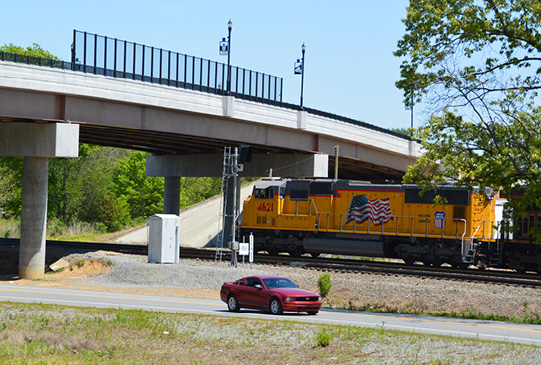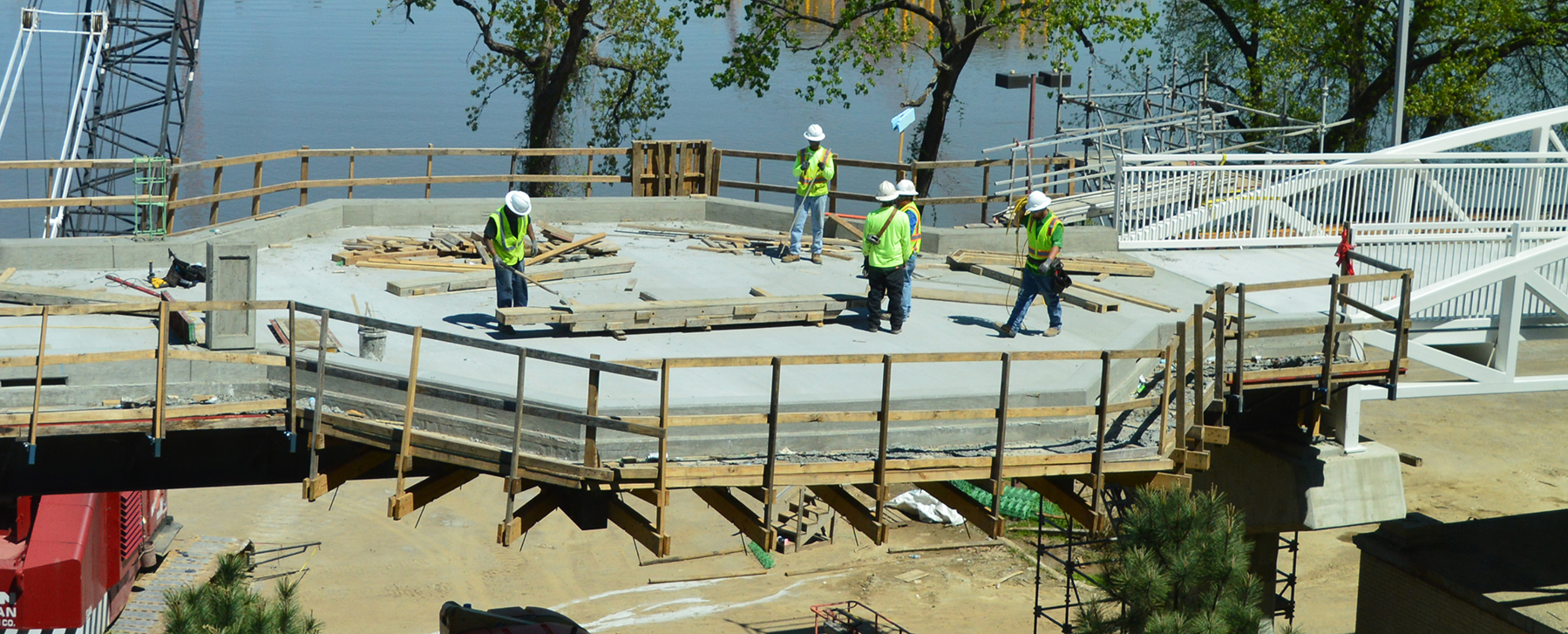3.
Maintain current roadway network and prioritize projects that optimize existing infrastructure before expanding capacity.
With an ever-increasing cost to maintain our transportation system and finite funding, funding is focused on projects that maintain existing facilities in a good state of repair and look for opportunities to improve transportation efficiency. Like previous MTPs, Transforming Mobility establishes a priority toward maintaining our aging infrastructure and finding ways to optimize its utility.
Central Arkansas has 6,700 lane miles of functionally classified roads, 1,250 bridges, and countless miles of sidewalks and bike facilities. Roadway rehabilitation is critical to extending the life of these corridors. Approximately $75 million in federal funds annually are designated towards network maintenance. This amount is still far less than required to keep these facilities in a good state of repair. It must be supplemented with additional funds to maintain the network in an affordable manner.
Since new roadway construction and major widening are expensive endeavors, the remaining federal funds are focused on system efficiency projects. These are cost efficient methods to improve and maintain traffic flow and keep the transportation networks in a good state of repair. System efficiency projects include intersection projects, Intelligent Transportation System implementation, and interchange improvements. Surface Transportation Program funding may be added to funding available for the maintenance and reconstruction of critical infrastructure (bridges). Where roadway widening is crucial, it should be coordinated with rehabilitation projects to minimize overall cost.
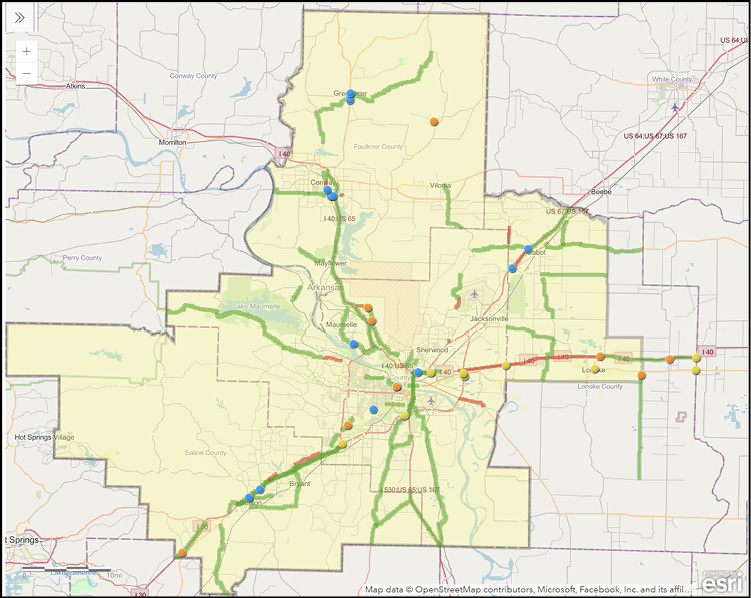
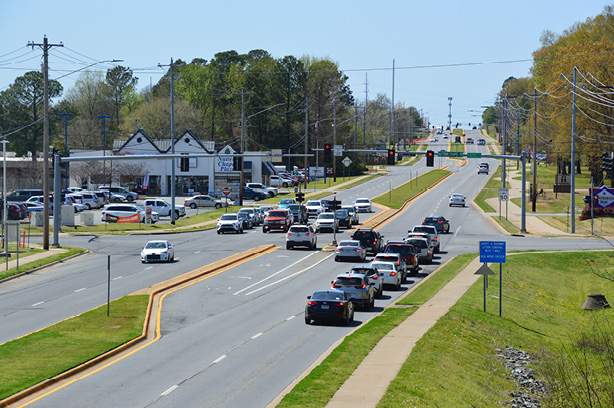
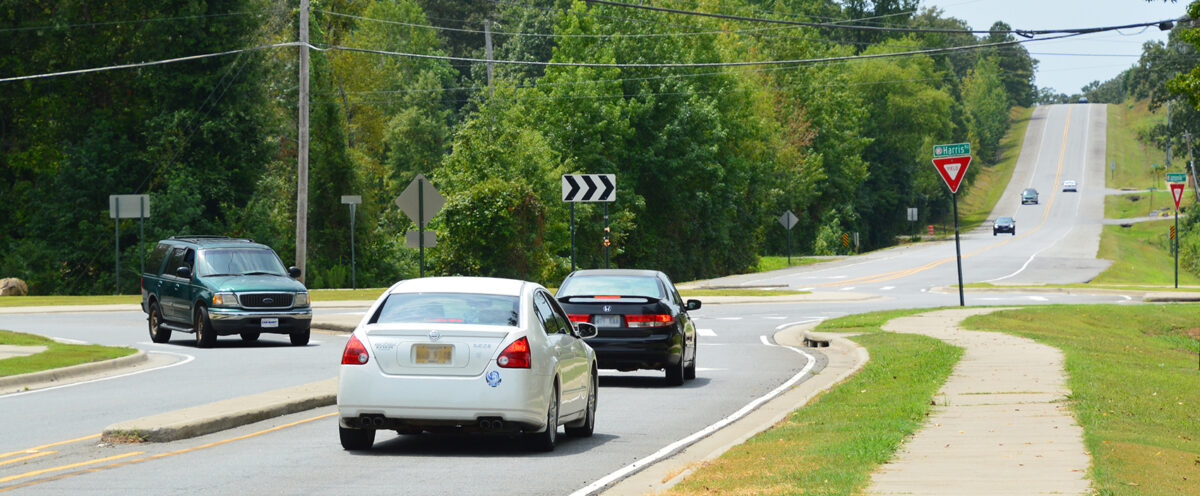
Roundabouts often improve traffic throughput while
enhancing safety for vehicles, pedestrians, and bicycles.
Freeways are vital to commuters and are major freight movers. Keeping them well-maintained is important to our economic competitiveness. Partnership with ARDOT has led to substantial investments for our region’s freeways. Major reconstruction on Interstates 30, 40, 430, and 630, along with improvements to interchanges, have improved operations and revitalized deteriorating roadways.
Sections of our freeways are still due for a major rehabilitation, particularly segments in the urban core. Freeways, such as I-630 in downtown Little Rock, present an opportunity for multimodal connections when they are rebuilt. Metroplan will work with ARDOT to ensure that overpasses, underpasses, pedestrian bridges and more innovative solutions, like deck parks, are considered in project development. These connections can bridge the divide between neighborhoods and commercial core.
The RAN provides an alternative to the freeway system. Metroplan must now determine how it will maintain the corridors it has invested in and where additional investments are needed. Moreso, how do Metroplan RAN projects improve safety, travel time reliability for commuters, and target multimodal mobility accommodations strategically? Innovations to intersections and traffic signal technology can optimize our current roadway performance. The Multimodal Guidelines can help identify the character of a street and appropriate treatments that would fit into roadway rehabilitation. These techniques should be considered as we reevaluate the RAN.
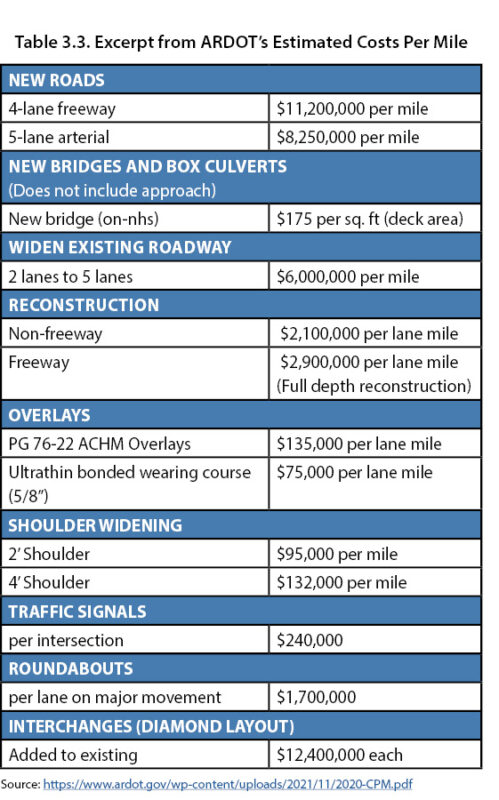
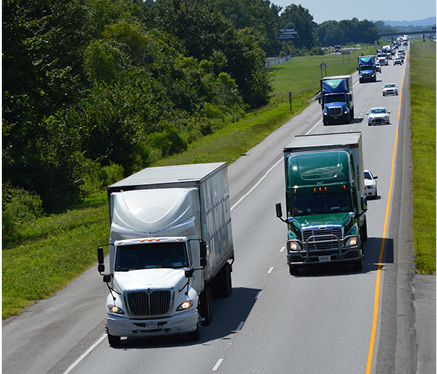
economic competitiveness.
